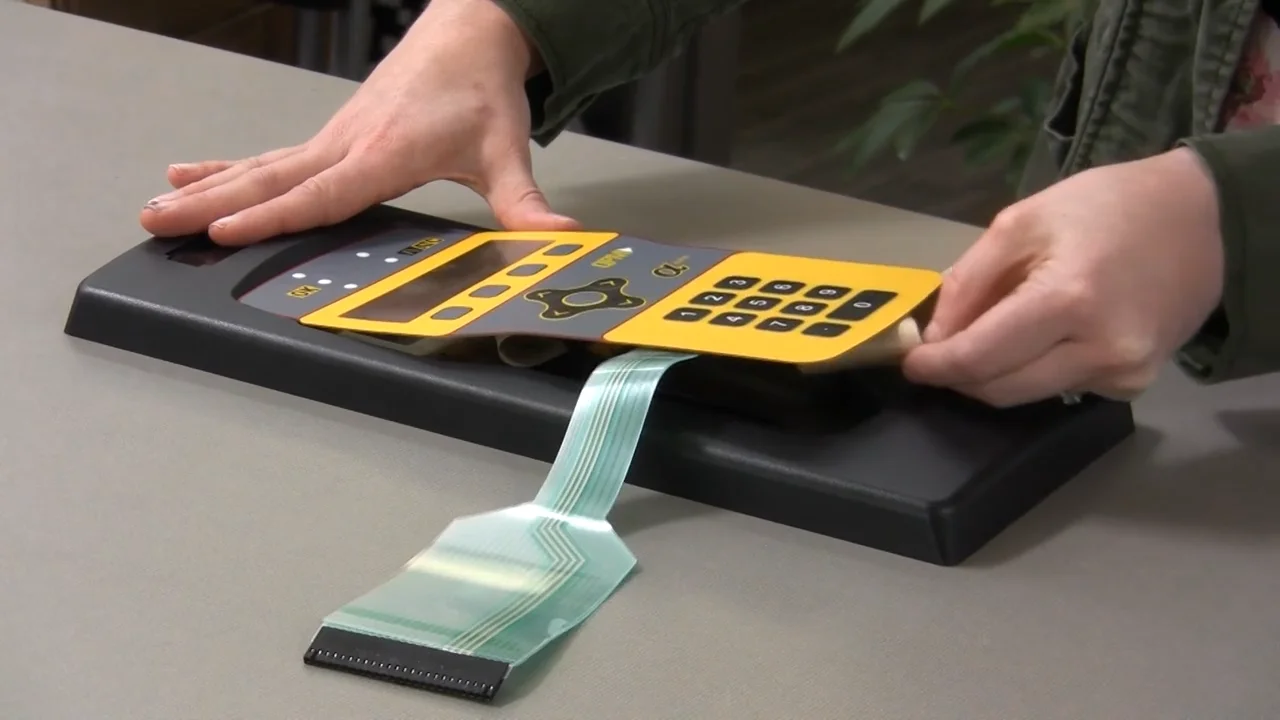Discover Different Sorts Of Membrane Switch Technologies for Your Requirements
Discover Different Sorts Of Membrane Switch Technologies for Your Requirements
Blog Article
Recognizing the Performance of Membrane Layer Switches Over for Interface Tools
The functionality of membrane changes stands for a significant advancement in user interface style, incorporating effectiveness with visual flexibility. These switches run with a multi-layered structure that equates customer communications right into electric signals, allowing for both compact designs and resilience against environmental factors. As sectors increasingly focus on customer experience, recognizing the subtleties of membrane switch innovation ends up being vital. What effects do these innovations hold for future applications, and just how might they redefine customer interactions across numerous devices?
What Are Membrane Switches?
Membrane switches are ingenious user interface gadgets that help with user communication with digital tools. These versatile components consist of numerous layers, including a graphic overlay, spacer, and a published circuit layer. The layout permits a smooth integration into numerous digital devices, enhancing both the aesthetic and useful facets of individual interfaces.
Membrane layer switches are typically used in a wide variety of applications, from house devices to commercial equipment and medical gadgets. Their building and construction commonly includes a thin profile, making them an optimal option for portable designs. The responsive responses supplied by these switches can be crafted to fulfill specific customer preferences, ensuring efficient communication between the user and the device.
Sturdiness is another considerable benefit of membrane layer buttons, as they are immune to dust, wetness, and chemicals, which boosts their life-span sought after environments. Additionally, these buttons can be tailored in regards to shape, dimension, and graphic design, enabling branding and user-specific features. On the whole, membrane changes represent a practical solution for improving individual experience in digital tools, combining performance with visual appeal in a reliable manner.
Just How Membrane Layer Changes Job
Operating on an uncomplicated principle, membrane layer switches make use of a split construction to register individual input successfully. Each switch contains multiple layers, including a printed circuit layer, a spacer layer, and a leading visuals layer, which are designed to collaborate perfectly. When an individual presses the top layer, it presses the spacer layer, bringing the conductive elements of the circuit layer into call with each other.
This get in touch with produces a closed circuit, signifying the tool to implement a details feature. The style permits different setups, including responsive responses, which can improve the individual experience by offering a physical sensation upon activation. The products made use of in membrane layer switches commonly consist of adaptable substrates, such as polyester or polycarbonate, which make sure sturdiness and resilience against deterioration.

Key Benefits of Membrane Buttons

An additional considerable advantage is their density. Membrane buttons are thin and lightweight, which allows suppliers to save space in their tools without compromising capability. This feature is specifically valuable in applications where weight and quantity are critical factors to consider.
In addition, membrane switches are resistant to dust, wetness, and chemicals, enhancing their toughness. This resilience expands their life expectancy and reduces the demand for constant replacements, causing expense financial savings with time.
Additionally, the responsive feedback provided by membrane switches can be enhanced to enhance individual communication. They can include functions such as raised switches or audible clicks, improving usability and individual experience.
Applications Throughout Industries
Individual user interface devices using membrane layer buttons are common in a wide range of sectors, showcasing their versatility and performance. Membrane Switch. In the clinical field, membrane switches are important to tools such as diagnostic equipment and individual surveillance systems, where their longevity and simplicity of cleansing are essential for preserving health standards. Similarly, in the automotive market, these buttons are used in dashboard controls and infomercial systems, supplying a streamlined and modern user interface for customers.
Moreover, the consumer electronics field take advantage of membrane switches in home appliances and portable tools, where small style and straightforward user interfaces boost customer experience. Industrial applications also leverage membrane layer switches for control panels in equipment and automation systems, stressing their robustness and resistance to severe atmospheres.
In the aerospace and protection sectors, membrane layer buttons are used in cockpit controls and devices, where reliability and performance under severe problems are paramount. In addition, the pc gaming market significantly includes membrane switches in controllers and arcade devices, adding to an interesting individual experience. Overall, the adaptability of membrane layer switches enables their extensive usage throughout this page numerous markets, highlighting their importance in modern-day interface style.
Future Fads in Membrane Layer Switch Over Modern Technology

Additionally, making use of sophisticated products, such as polycarbonate and polyester films, is anticipated to rise, giving improved toughness and resistance to environmental stressors. These materials add to the total long life of membrane switches, making them appropriate for harsher industrial applications.
Additionally, the unification of clever technology, including IoT connection, will certainly allow membrane layer switches to interact with other devices and systems, assisting in a more interactive individual experience. This trend lines up with the expanding need for wise devices across different industries, from health care to customer electronic devices.
Lastly, modification alternatives are prepared for to increase, allowing producers to develop bespoke remedies tailored to particular individual requirements and preferences. These advancements will certainly position membrane layer buttons as essential elements in the evolution of interface modern technology.
Conclusion
In final thought, membrane changes stand for an essential advancement in interface modern technology, providing a trustworthy and versatile solution for varied electronic applications. Their split construction helps with portable layout, while features such as tactile responses boost customer communication. The toughness versus environmental factors better solidifies their utility throughout multiple industries. As developments in product science and touch noticing technologies proceed, the capability and applicability of membrane layer buttons are expected to expand, strengthening their relevance in modern digital gadgets.
Report this page